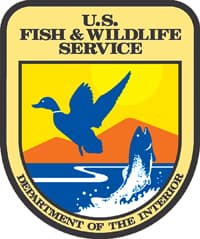Endangered Species Act Protection Not Warranted for Butterfly
OutdoorHub 08.31.12

Citing a growing number of documented populations, the U.S Fish and Wildlife Service announced today that the mardon skipper butterfly (Polites mardon) does not warrant protection under the federal Endangered Species Act (ESA).
The decision follows a year-long review of the best scientific and commercial information about the species, which was identified as a candidate species in 1999. It was petitioned for listing as endangered by The Xerces Society, Gifford Pinchot Task Force, The Northwest Environmental Defense Center, Center for Biological Diversity, Oregon Natural Resources Council, Friends of the San Juans and Northwest Ecosystem Alliance in 2002.
In addition, after a review at our discretion of the subspecies, Polites mardon mardon and Polites mardon klamathensis, the Service finds that listing for these subspecies also is not warranted at this time.
“Over the past decade, the U.S. Forest Service, the Bureau of Land Management and the Washington Department of Fish and Wildlife have put considerable effort into species surveys, mardon skipper habitat studies and conservation efforts. Thanks to these actions, the number of documented locations of mardon skippers has expanded from14 in 1999 to 165 as of 2011,” said Robyn Thorson, Director of the Service’s Pacific Region. “We believe this additional documented habitat and the efforts our state and federal partners have made to address threats to the species are sufficient to secure the continued existence of the mardon skipper for the foreseeable future.”
Thorson noted that surveys since 1999 indicate the mardon skipper is not only more abundant than previously known but also more widely distributed.
The species is known from four widely-separated locations: the south Puget Sound region of Washington; the southern Washington Cascades Mountains; the Cascades Mountains of southern Oregon; and coastal hills in southern Oregon and northern California.
“In the past five years in particular,” Thorson said, “significant new populations have been located in the Washington Cascades and in coastal areas of California and Oregon, with some sites supporting hundreds, even thousands of individual butterflies.”
Thorson said the majority of the sites are on lands managed by federal and state agencies. She said the conservation efforts undertaken on those lands afford the species a high level of protection without imminent risks of habitat loss through development or other impacts.
The mardon skipper is a small (less than one inch long) tawny-orange butterfly with a stout hairy body. It flies low to the ground with a fast skipping flight. The adult flight period is brief, lasting only two to four weeks. Mardon skipper caterpillars feed on grasses and emerge as adults in late spring or early summer. The butterflies do not migrate and complete their life-cycle within their natal habitats.
A copy of today’s finding is available by going to the Federal Register’s public inspection site and scrolling down to Fish and Wildlife Service:
http://www.ofr.gov/inspection.aspx#regular
Beginning September 4, 2012, the finding will be available in the Federal Register at: http://www.archives.gov/federal-register/index.html
The health of threatened and endangered species is strongly linked to our own well-being. Millions of Americans depend on habitat that sustains these species – for clean air and water, recreational opportunities and for their livelihoods. By taking action to protect imperiled native fish, wildlife and plants, we can ensure a healthy future for our community and protect treasured landscapes for future generations.

